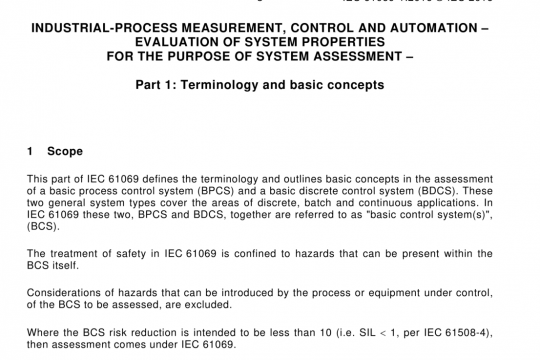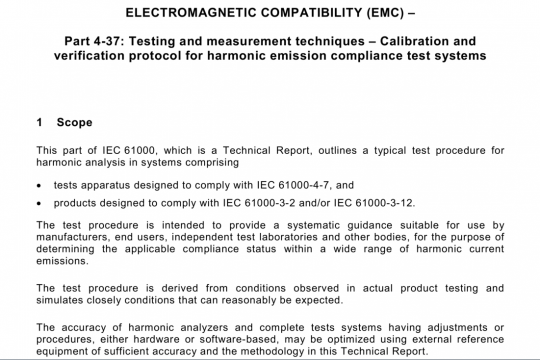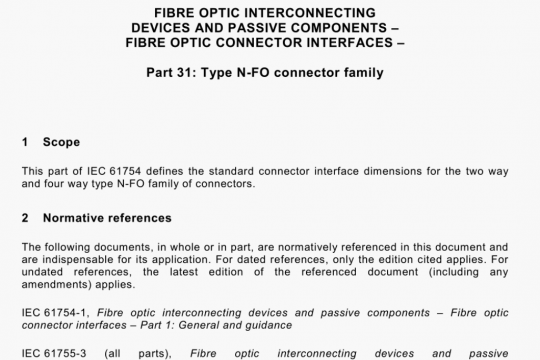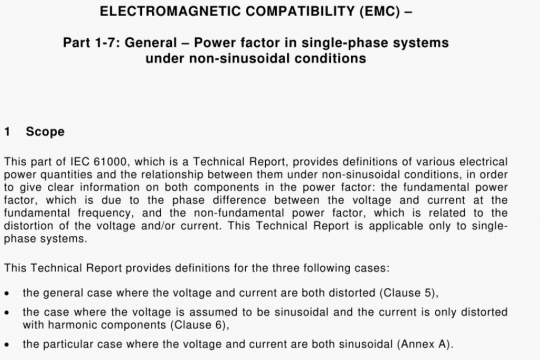IEC 62769-1 pdf free download
IEC 62769-1 pdf free download.Field device integration (FDI) – Part 1: Overview.
Two different device integration technologies exist: the Electronic Device Description Language (EDDL) in accordance with IEC 61804 and the Field Device Tool (FDT®) in accordance with IEC 62453. While these technologies take different approaches to solve the problem, there is a lot of overlap between them. This has led to a situation where the technologies compete instead of complementing each other. As a result, system suppliers have taken their positions, device suppliers have had to double their efforts in order to support EDDL and FDT®, and the end users have become frustrated because they want the best of both technologies.
For all parties involved, the ideal solution looks different. System suppliers want to achieve robustness while assuring a high level of technology and platform independence. Device suppliers want to support only one technology instead of two in order to reduce cost and effort, and they want to provide the optimal means for operating their devices. End users want to avoid false investments and therefore demand only one future-proof solution that offers all the advantages of the competing technologies.
4.2 Electronic Device Description Language (EDDL)
The Electronic Device Description Language (EDDL) is a language for describing the behavior of field devices. It enables systems to configure, calibrate, troubleshoot, and operate a field device without any prior knowledge of the device.
Device descriptions written in EDDL describe the capabilities of the field device; it is up to the system to determine how to utilize these capabilities. These device descriptions enable systems to access all the data and properties of all devices, which simplifies the maintenance, support, and operation of the devices. It works well for small hand held applications and large integrated automation systems. It works well for embedded systems and systems running on commercial operating systems.
With EDDL, the device supplier can organize the device’s data, properties, and procedures for access by the end user. This provides the system guidance in dynamically creating a user interface for the device. The capabilities of this user interface can vary significantly for different classes of devices, and it can be as simple or complex as the device being described.
In the early 1990s, the first version of EDDL was created and was used to describe HART field devices. In 1996, the EDDL was used to describe FOUNDATION Fieldbus devices. Then in 2000, it was used to describe PROFIBUS devices. All three versions of EDDL can trace their lineage back to the original HART version. Therefore, all three versions are largely the same, with some differences due to differences in the underlying communication protocols. EDDL was standardized first as part of lEG 61 804-3 and IEC 61804-4 in March 2004.
4.3 Field Device Tool (FDT®)
FDT® is an interface specification that standardizes the interface between the device software and the systems. It provides independence from the communication protocol and establishes a clear boundary between the software provided by the device supplier and the software provided by the system supplier.
In FDT®, field devices are delivered with a device-specific software component called a Device Type Manager (DTM), which is only functional when used in conjunction with an FDT®specific environment called a “frame application”. A frame application interacts with a DTM through a set of standard FDT® interfaces.
A device supplier can develop a DTM for each of its devices, or it can develop a DTM for a group of devices. A DTM can be used to access Device Parameters, configure and operate the device, and diagnose problems. A DTM can range from a simple Graphical User Interface (GUI) for setting Device Parameters to a highly sophisticated application for performing complex calculations for diagnosis.IEC 62769-1 pdf download.




